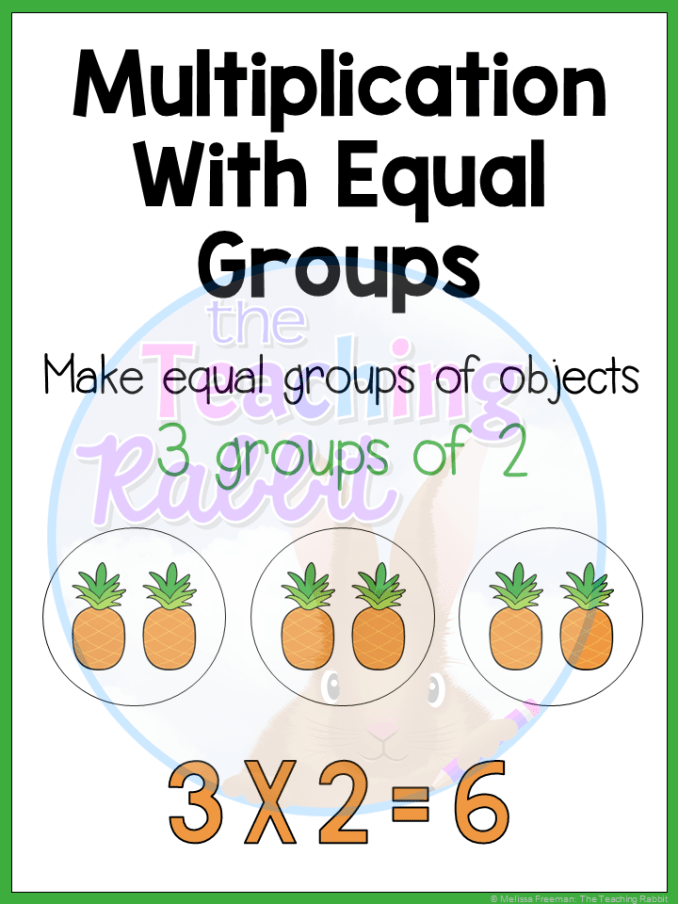
Are you teaching your students to multiply? Looking for some ideas? Memorizing facts is helpful, but understanding what they are actually doing is important. These multiplication strategies may help them grasp the concepts and become building blocks for future math lessons.
Multiplication Using Equal Groups
This strategy is simply making equal groups of objects to help visualize the problem and solution. Students can use manipulatives or drawings to show equal groups.
Let's do an example!
In this question, we are trying to find the product. The number of groups and the number of objects in each group are provided. We can draw the students and the gumballs to help us visualize this problem.

So we have drawn 4 students and given them each an equal group of 6 gumballs. If we now count up the total number of gumballs, we will find our answer.
We can teach students to think of it as:
Number of Groups X Number of Objects in Each Group
4 groups X 6 gumballs = 24 gumballs
For practice, write a simple question on the board and have students solve it using cubes at their desks or drawings in their math notebooks.
Multiplication Using Arrays
Another way to visualize a multiplication problem is to use arrays. This involves arranging the objects into rows and columns. Ask your students to think of some things that are already in arrays (muffin tins, egg cartons, seats in the classroom, etc.). Ask them what they think the benefits are. Does it make it easier to count them than if all the objects were scattered?
Let's use the same question we did before. Four students bought 6 gumballs each. Draw an array.
Students would create an arrangement of 4 rows and 6 columns to represent this problem.

They can easily see that 4 X 6 = 24.
Multiplication as Repeated Addition
Teaching multiplication as repeated addition is when you add the same number multiple times. To solve 4 X 6 we could add 4 six times or 6 four times as shown below.
4 + 4 + 4 + 4 + 4 + 4 = 24
OR
6 + 6 + 6 + 6 = 24
Students can add these numbers together on a number line, using objects, or in their heads. This is where knowing to skip count comes in handy.
For example:

Here is an example of a question you can try with your class. Draw 3 groups of 8 objects on the board and ask them to write both the repeated addition and multiplication sentences.
If you are looking for some fun multiplication activities, check out these Multiplication Word Problems, Worksheets & Task Cards.
You may want to check out these Math Units for Grades 1, 2, & 3 or this blog post about Math Centers!









